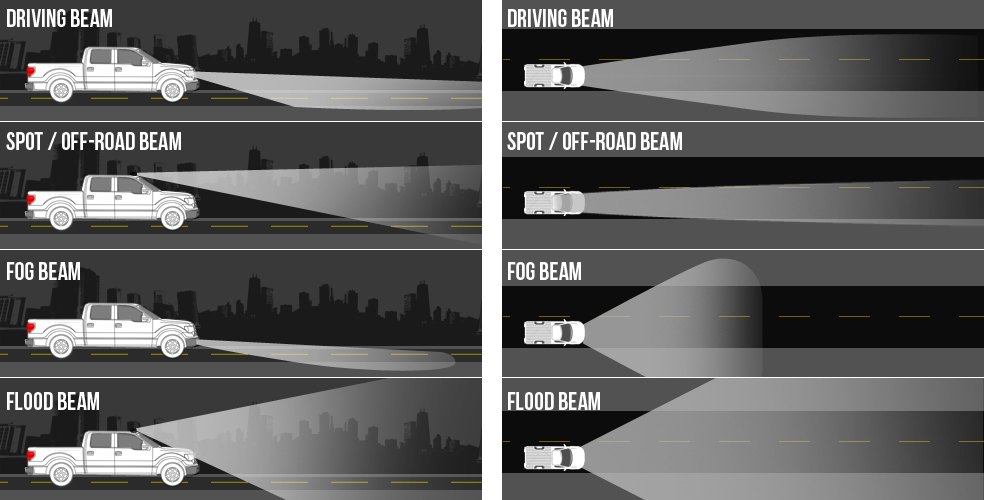| PM | Quote | Reply | Full Topic |
SITE SPONSOR
Joined: Thu Nov 23rd, 2017
Posts: 389
Status:
Offline
Reputation: 











Reputation Points: $user_rep
I was meaning to show what, where, and how that's applied in vehicular lighting. When we speak left or right hand drive vehicles the differences in lighting are highly apparent.
Please see the following.
- The headlamp aiming procedure depends on what type of beam pattern the headlamp is equipped with. Vehicles may come equipped with visual optical left (VOL), visual optical right (VOR) or SAE only (includes sealed beam type) headlamps. To identify the headlamp beam pattern, look on the headlamp lens. Molded in small letters on the headlamp lens is 1 of the following:
- SAE
- VOL and SAE
- VOR and SAE
- Photometric aimers can aim VOL-, VOR- and SAE-type headlamps only. This is the preferred method of headlamp aiming.
- Visual or screen method aiming can be used to aim VOL-, VOR- and SAE-type headlamps only.
- Mechanical aimers cannot be used with VOR- or VOL-type headlamps. Aerodynamic lamps that can be aimed mechanically have 3 nibs molded into the lens of the lamp.

To establish further what a foglight actually is is arguable between white and yellow light sources. What remains the same is the pattern and where and how it is spread; generally low and forward of a vehicle to light up road markings and see in front of you. I think, and I could be wrong but I think amber lighting in any inclimate weather to a degree is better than white lighting. Same could be said for other countries that require a rear facing red Foglight, usually a brighter than your taillights red so following cars can judge distances and travel safer behind you.
Madmaxx ~ The OEM foglights are a flood light pattern, the fact that Ford issued them in clear, or WHITE light I am unsure of relevance other than a play in aesthetics and customer favoritism. Unless you're a late 80's to early 2000's Lexus connoisseur or have lived in other parts of the world where fog is a real issue, few appreciate the yellow lighting and seem to prefer the clear. Function? Marketing? Couldn't tell you and I bet if we pulled talking heads from each car company their answers would be all over the place on the reasons.
Scrambler82 ~ The reference to foglights with VOL and VOR were again were for the sake in speaking about cutoffs of light patterns and sort of in lieu of there use.
To answer your 2nd question; As @Ordinary Biker mentioned in his unfavorable and descriptive example of rude and discourteous others when they just 'POP' in an H.I.D or L.E.D. bulb into a housing that is not meant for such a illumination source becoming a careless hazard. He describes the efforts he took to have a focused projector beam of far better light and standards vs. a HOT (unfocused and extremely bright light) headlight drying out the eyes of oncoming traffic goers.
Although in similar but opposite fashion, a "Driving Light" is meant to shine a light far down the road in a much narrower pattern. Vs a flood or even a foglight pattern. This visial may help better.

Its also why in our small advertisement of LED light bars we bring up the point that all LED light bars are not created equal NOR used for the same things and functions. If you're using low speeds and want to bring on artificial daylight, we have lighting that works for that.
If you want to drive close to or in excess of a 100 MPH offroad, you may want lighting that shines far enough that you'll never catch it, or hit anything in front of you.
Last edited on Sat Feb 3rd, 2018 07:04 am by 12° North Industries
____________________
North Industries
Las Vegas, Nevada 89118
Web http://www.12degnorth.com
